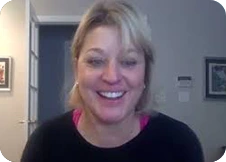Conforming loan limits are the maximum loan amounts that Fannie Mae and Freddie Mac will purchase from lenders. The Federal Housing Finance Agency sets these limits annually based on the average home price in a given area.
Conforming loan limits exist to ensure that homebuyers have access to affordable financing options. It also restricts Fannie Mae and Freddie Mac from purchasing mortgages for homes that exceed a certain price range.
🚀 Key Takeaways
- Conforming Loan Limits: The conforming loan limit for 2023 is $726,200, whereas the ceiling limit for a high-cost area is $1,089,300.
- When Does New CLL become effective?: At the end of November every year, FHFA updated the CLL values, and a month later, i.e., on 1st Jan it becomes effective.
- Who Sets CLL?: The Federal Housing Finance Agency (FHFA) sets the conforming loan limit.
What Is the Conforming Loan Limit?
Conforming loan limits are the maximum loan amounts FHA allows you to borrow. The Federal Housing Finance Agency (FHFA) oversees Fannie Mae and Freddie Mac to ensure safe and sound lending practices. Additionally, the FHFA adjusts conforming loan limits each year to ensure that borrowers can afford homes at current prices.
Lenders establish these limits to ensure liquidity in the mortgage market. Factors such as property values and market conditions influence the variation of these limits by location.
Conforming loan limits for one-unit properties in most parts of the country are $726,200, but in high-cost areas, they can reach $1,089,300.
How the Conforming Loan Limits Work in 2023
Here’s how FHFA conforming loan limits generally work:
The FHFA reviews and adjusts the conforming loan limits annually based on changes in average home prices. This review takes into account data from FHA, the Census Bureau, and other housing-related indices.
Then, the FHFA sets a baseline loan limit for conforming loans. This represents the maximum loan amount that can be considered conforming in areas where the local median home price is at or below the baseline limit.
In regions where housing costs are higher, the FHFA establishes higher loan limits called high-cost area limits. The higher limits are designed to account for the increased cost of housing in those areas.
Conforming loan limits can vary based on the number of units in the property. For example, there are separate limits for one-unit properties, two-unit properties, three-unit properties, and four-unit properties.
The FHFA sets conventional loan limits on a county-by-county basis to account for regional differences in home prices. Lenders assign a specific loan limit to each county or equivalent area. And these limits can vary across different parts of the country.
👉 Conforming Loan Limit Values Map: Click here and look up your county’s limit.
Conforming Loan Limits for 2023
The U.S. has updated the conforming loan limits for 2023. The new baseline limit for a single home is $726,200, a $79,000 increase over the corresponding year.
The baseline amount applies in most of the counties, whereas the limits vary with higher home prices. The maximum loan limit for a high-cost area can go up to $1,089,300.
The new conforming loan limits for 2023 in each state are as follows:
| State | Average Home Building Cost |
|---|---|
| Conforming Loan Limit In Alaska | $1089,300 |
| Conforming Loan Limit in Alabama | $726,200 |
| Conforming Loan Limit In Arizona | $726,200 |
| Confirming Loan Limit In Arkansas | $726,200 |
| Confirming Loan Limit In California | $915,400 |
| Confirming Loan Limit In Colorado | $726,200 |
| Confirming Loan Limit In Connecticut | $726,200 |
| Conforming Loan Limit In Delaware | $726,200 |
| Conforming Loan Limit In District Of Columbia | $726,200 |
| Conforming Loan Limit In Florida | $726,200 |
| Conforming Loan Limit In Georgia | $726,200 |
| Conforming Loan Limit In Hawaii | $1,089,300 |
| Conforming Loan Limit In Idaho | $726,200 |
| Conforming Loan Limit In Illinois | $726,200 |
| Conforming Loan Limit In Indiana | $726,200 |
| Conforming Loan Limit In Iowa | $726,200 |
| Conforming Loan Limit In Kansas | $726,200 |
| Conforming Loan Limit In Kentucky | $726,200 |
| Conforming Loan Limit In Louisana | $726,200 |
| Conforming Loan Limit In Maine | $726,200 |
| Conforming Loan Limit In Maryland | $726,200 |
| Conforming Loan Limit In Massachusetts | $726,200 |
| Conforming Loan Limit In Michigan | $726,200 |
| Conforming Loan Limit In Minnesota | $726,200 |
| Conforming Loan Limit In Mississippi | $726,200 |
| Conforming Loan Limit In Missouri | $726,200 |
| Conforming Loan Limit In Missouri | $726,200 |
| Conforming Loan Limit In Montana | $726,200 |
| Conforming Loan Limit In Nebraska | $726,200 |
| Conforming Loan Limit In Nevada | $726,200 |
| Conforming Loan Limit In New Hampshire | $726,200 |
| Conforming Loan Limit In New Jersey | $1,089,300 |
| Conforming Loan Limit In New Mexico | $726,200 |
| Conforming Loan Limit In New York | $726,200 |
| Conforming Loan Limit In North Carolina | $726,200 |
| Conforming Loan Limit In North Dakota | $726,200 |
| Conforming Loan Limit In Ohio | $726,200 |
| Conforming Loan Limit In Oklahoma | $726,200 |
| Conforming Loan Limit In Oregon | $726,200 |
| Conforming Loan Limit In Pennsylvania | $726,200 |
| Conforming Loan Limit In Rhode Island | $726,200 |
| Conforming Loan Limit In South Carolina | $726,200 |
| Conforming Loan Limit In South Dakota | $726,200 |
| Conforming Loan Limit In Tennessee | $726,200 |
| Conforming Loan Limit In Texas | 726,200 |
| Conforming Loan Limit In Utah | $744,050 |
| Conforming Loan Limit In Vermont | $726,200 |
| Conforming Loan Limit In Virginia | $726,200 |
| Conforming Loan Limit In Washington | $726,200 |
| Conforming Loan Limit In West Virginia | $726,200 |
| Conforming Loan Limit In Wisconsin | $726,200 |
| Conforming Loan Limit In Wyoming | $726,200 |
Conforming Loan Limits in High-Cost Areas
The loan limit in some parts of the U.S. is higher than in the rest of the U.S. In areas classified as “high cost”, the maximum single-family home purchase limit is $1,089,300.
The FHFA sets specific limits annually based on the average home prices in those areas. In the year 2022, the conforming loan limit in most areas was $647,200, but in high-cost areas, it was up to $970,800.
Borrowers in high-cost areas may be able to borrow more money without taking a jumbo loan.
Special Considerations of the Conforming Loan Limit
Here are several special considerations associated with conforming loan limits:
- Regional Variation: The conforming loan limit is not the same across all areas of the country. It varies based on the median home prices in each county or metropolitan statistical area (MSA).
- Loan Limit Updates: The conforming loan limit is not static and can change annually. The FHFA reviews it based on the average home price fluctuations. This periodic adjustment ensures that the conforming loan limit remains aligned with the current housing market conditions.
- High-Cost Area Designations: Certain regions with exceptionally high housing costs are designated as high-cost areas. The high-cost area enables borrowers to access conventional loans for more expensive homes without having to resort to jumbo loans.
- Jumbo Loan Threshold: Jumbo loans exceed the conforming loan limit. It has higher interest rates, a larger down payment, and strict underwriting standards. Therefore, borrowers seeking a mortgage above the conforming loan limit may face additional challenges.
- Impact on Mortgage Rates and Availability: Conforming loans, due to their adherence to Fannie Mae and Freddie Mac guidelines offer lower interest rates. This is because conforming loans are eligible for sale in the secondary mortgage market, making them less risky for lenders.
- Economic and Market Factors: Economic factors such as inflation, housing market conditions, and overall mortgage industry trends influence the conforming loan limit. If home prices experience significant appreciation, it may result in a higher conforming loan limit. Conversely, if home prices decline or remain stagnant, the conforming loan limit may not see substantial changes.
Find Homes for Sale Under Your Specific Budget
Conclusion
The conforming loan limit serves as a crucial guideline in the mortgage market, impacting borrowers, lenders, and the overall housing industry. if you are seeking a mortgage then you can understand how lenders determine the conforming loan limit.
You can recognize its regional variations, and comprehend its implications. To make informed decisions, you must consult with knowledgeable mortgage professionals.
These professionals can provide personalized guidance and help navigate the intricacies of Freddie Mac loan limits, enabling borrowers to find the best mortgage solution for their specific needs.
Find Your New Home With Houzeo
With thousands of property listings, Houzeo.com is one of the biggest property listing sites in the US. Find condos, townhouses, co-ops, and other types of homes for sale on Houzeo.
» NEED MORE CLARITY? Read these exclusive Houzeo reviews and learn why the platform is the best in America’s competitive housing market.
Frequently Asked Questions
1. What is the jumbo conforming loan limit for 2023?
In high-cost areas, the ceiling for conforming loan limits is $1,089,300 for 2023.
2. Who sets conforming loan limits?
The Federal Housing Finance Agency (FHFA) sets Fannie Mae and Freddie Mac's conforming loan limits.
3. When do conforming loan limits change?
At the end of each November, the FHFA adjusts the conforming loan limits.



















.webp)
